
How to make an herbal salve
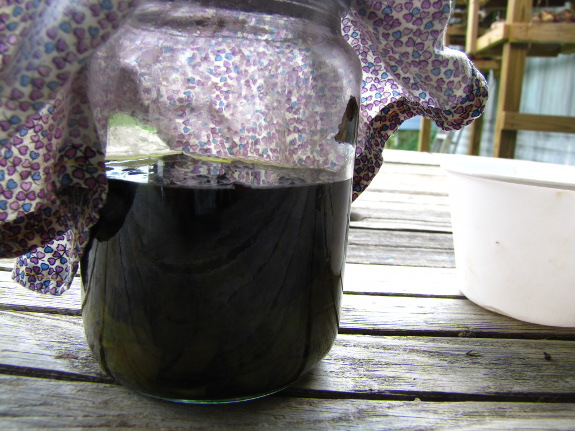
About a month ago, I
started some plantain and comfrey leaves steeping in olive oil for salve. At first, I
remembered to swirl the jar now and then to mix the contents, but after
a while the activity faded out of my daily routine and the jar simply
sat. Despite my neglect, the active ingredients seeped out of the
leaves and into the oil, creating an infusion.
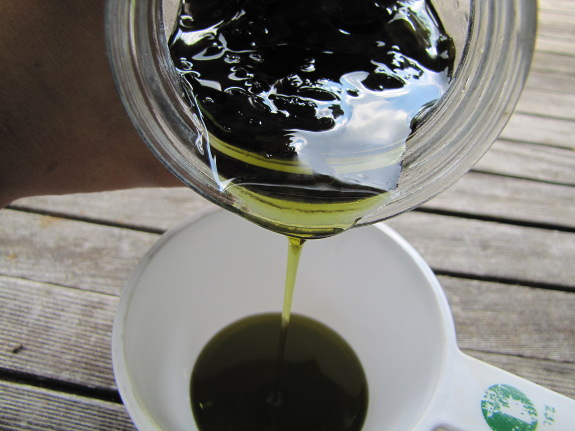
Sunday, I decided to
process my infusion and turn it into a salve. The first step was
to separate the herbal-infused oil from the leaves. I could have
sent the jar contents through a strainer, but was feeling lazy (and not
wanting to dirty extra dishes), so I just carefully poured the oil off,
using a spoon to push the leaves back into the jar. I ended up
with about three quarters of a cup of dark green oil.
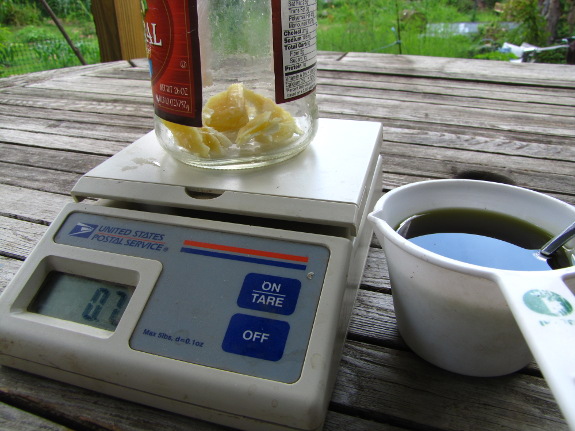
To turn an infusion into
a salve, you simply add a bit of melted beeswax to solidify the
concoction and make it stick to your skin when applied rather than
running off. A quick search of the internet suggests that one
ounce of beeswax is about right for a cup and an eighth of infusion, so
I chopped some wax off my
movie star neighbor's
gifted block and weighed it.
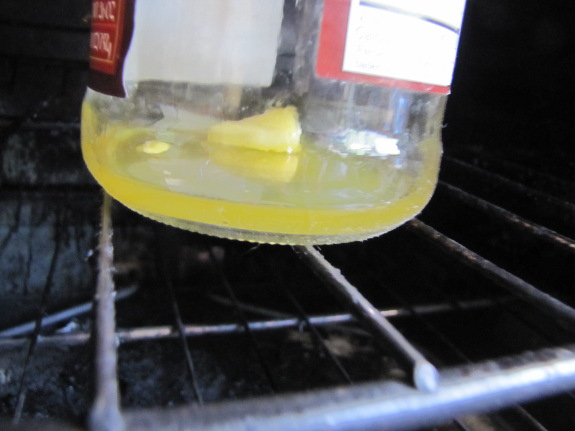
I'd just made a pie, so
put the wax in a washed-out peanut butter jar (glass) and placed the
container in the oven to take advantage of residual heat while I cooked
lunch. Twenty minutes later, the wax was liquid.
I'd read that you need
to preheat your infusion so you won't solidify the wax when you join
the two ingredients together, but I'd also read you don't want to get
your infusion very hot or you'll denature some of the active
chemicals. I opted to simply let my measuring cup of green oil
sit on top of the stove while melting the wax, but that turned out to
be not enough preheating --- little bits of wax came out of solution
when I poured in the warm oil. No problem --- I just put the jar
back in the warm oven while we ate our first homegrown watermelon of
the year, by which point everything was nicely dissolved.
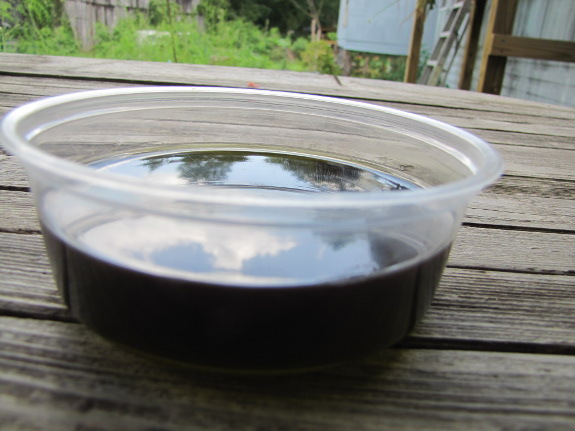
Most folks pour their
salve into small glass jars for storage, but what I had on hand was one
cup food storage containers, so that's what I used. The warm
salve poured in like a liquid, but set up within half an hour into a
soft but solid salve. At the rate I go through anti-sting
ointments, this should last me the rest of my life.
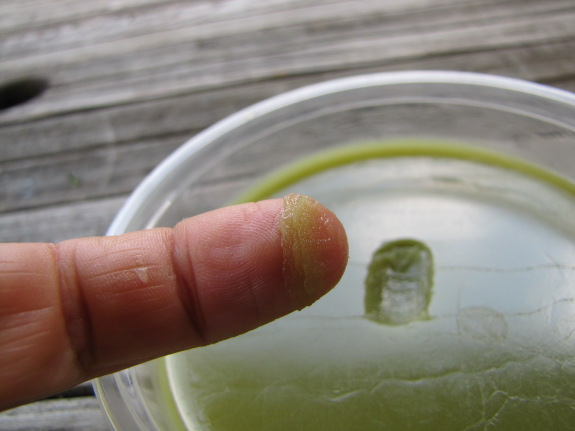
Rather than cleaning out
my wax-melting jar, I simply set it aside with my beeswax for
later. As easy and fun as salve-making turned out to be, I think
I might try my hand at a pure comfrey salve this year too.
Want more in-depth information? Browse through our books.
Or explore more posts by date or by subject.
About us: Anna Hess and Mark Hamilton spent over a decade living self-sufficiently in the mountains of Virginia before moving north to start over from scratch in the foothills of Ohio. They've experimented with permaculture, no-till gardening, trailersteading, home-based microbusinesses and much more, writing about their adventures in both blogs and books.
Want to be notified when new comments are posted on this page? Click on the RSS button after you add a comment to subscribe to the comment feed, or simply check the box beside "email replies to me" while writing your comment.

Jason --- I highly recommend it. Most homesteading projects turn out to be more complicated than you think, but this one turned out to be much easier --- a fun surprise!
Mona --- I usually just put comfrey on as a poultice too, but it would be nice to have it on hand for easy access in emergencies (or in the winter). It's a pretty miraculous plant --- I once used it to heal a huge gash in my foot that should have had stitches. (Yes, I do like to run around barefoot, even on glass....)
Interesting to see that the cut up leaves don't begin to decompose. Since commercial preparations are usually sterilized or contain preservatives, I wonder how long this would last, and how do you know when it goes bad?
According to the practical herbalist, essential oils or vitamin E oils are used to keep the oil from going rancid.